Art History
Beyond the Mona Lisa Circuit: 4 Astonishing Treasures Hiding in Plain Sight at Louvre
Louvre curator Dominique de Font-Réaulx took us off the beaten path at the world-famous museum to discover some of its overlooked treasures.
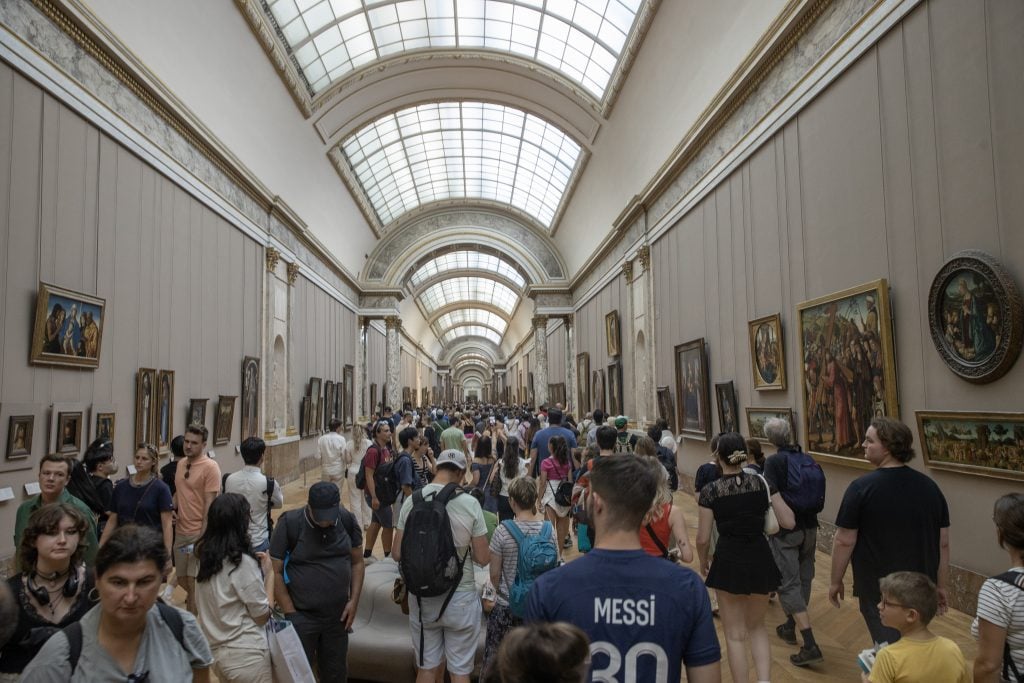
Louvre curator Dominique de Font-Réaulx took us off the beaten path at the world-famous museum to discover some of its overlooked treasures.

Devorah Lauter

In preparation for the Louvre guidebook that she was writing at the time, curator Dominique de Font-Réaulx said she spent a month following visitors around the Paris museum to see what they were looking at. “Don’t worry, I didn’t get too close to people,” she said while ducking in and out of the Louvre’s galleries at a clipped pace. She passed by crowded, princely ballrooms and steered through silent nooks without as much as a glance at a room number or a map.
After 17 years of working at the Louvre, where she is now in charge of programming, de Font-Réaulx knows the massive palace-turned-museum like the back of her hand, but even she has occasional—albeit brief—moments of navigational doubt.
Yet such instances of questioning, de Font-Réaulx believes, can lead to new encounters—which is at the heart of the museum experience. “From day to day, you don’t always see things the same way. Your outlook, and even your mood can change,” said the art historian.
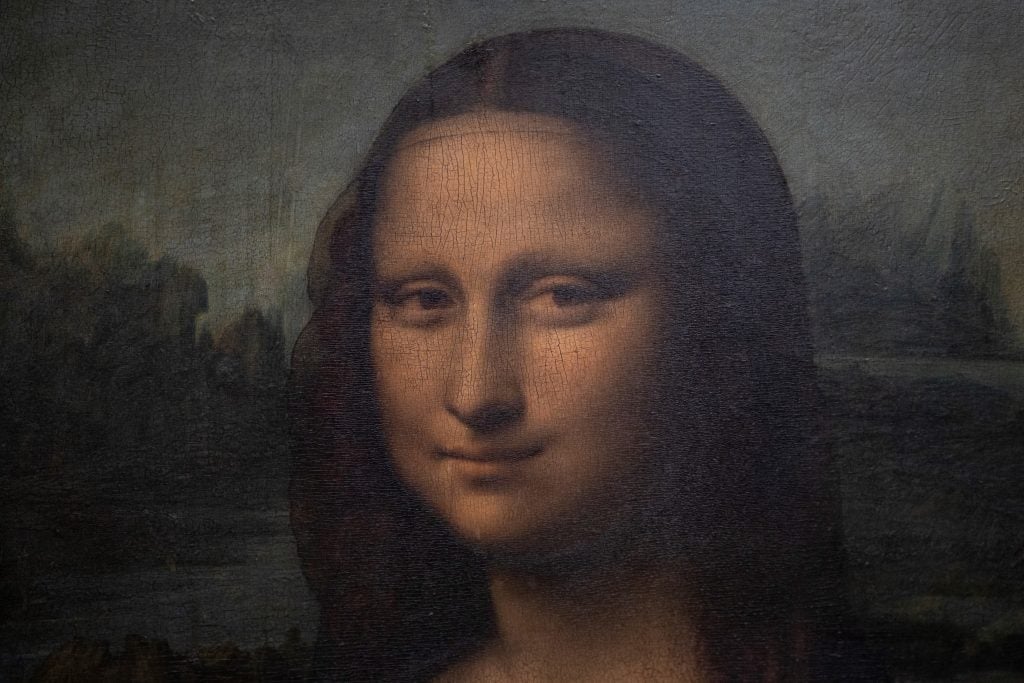
Detail of the Italian artist Leonardo da Vinci’s “Mona Lisa.” Photo: Thomas Samson/AFP via Getty Images
The new guidebook, commissioned by Louvre president Laurence des Cars and titled Le Louvre. The guide, encourages visitors to roam the institution freely. While it does include thematic and chronological groupings, it crisscrosses artworks of different mediums and histories to show the range of what a so-called “universal” museum can offer.
The Louvre is both an extensive learning tool and “an entity that holds surprises, points of rupture, and sometimes collages, or mixtures of things that don’t necessarily have much in common, but which nourish each other,” said De Font-Réaulx. “The best way to see the Louvre is to get lost.” In a whistle-stop tour, she led me to see a few examples of a few astonishing works that are off the beaten path. Here is a selection of artworks, which are also included in the book.
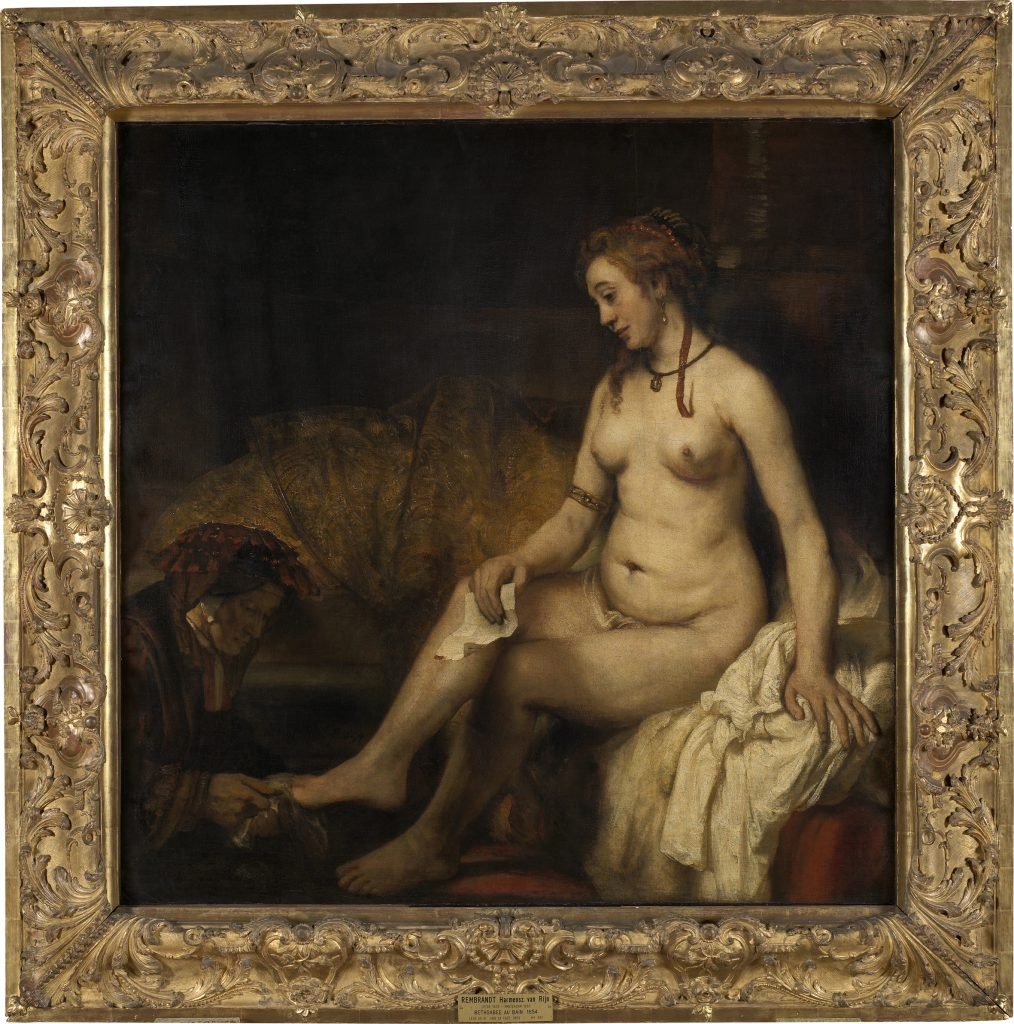
Rembrandt’s Bethsabée au bain tenant la lettre de David © musée du Louvre, dist. RMN – Grand Palais – Angèle Dequier
Rembrandt’s 1654 painting is one of the curator’s favorite artworks in the museum. Located in one of the less gilded rooms in the Richelieu wing, it is surrounded by treasures including more Rembrandts and other Dutch painters. Plus, there were no crowds when we visited during peak hours.
The painting depicts the Old Testament story of King David falling in love with Bethsheba, and the moment she reads his love letter to her, after the king conveniently sent her husband off to battle, where he died.
“What I find extraordinary is that the artist managed to render the full duality of the young woman’s feelings,” which she noted are melancholic while at the same time hopeful. “With her open eyes and the beginning of a half-smile, we see her sensitivity to the fact that David noticed her and fell in love with her,” said de Font-Réaulx. “Rembrandt renders the dual essence of the human soul in an absolutely magistral way.”
Bethsheba’s nude body also radiates light in the otherwise dark room, where her servant washes her. De Font-Réaulx explained the model used in the painting was actually Rembrandt’s wife. “He is looking at her with the eyes of someone in love,” she noted.
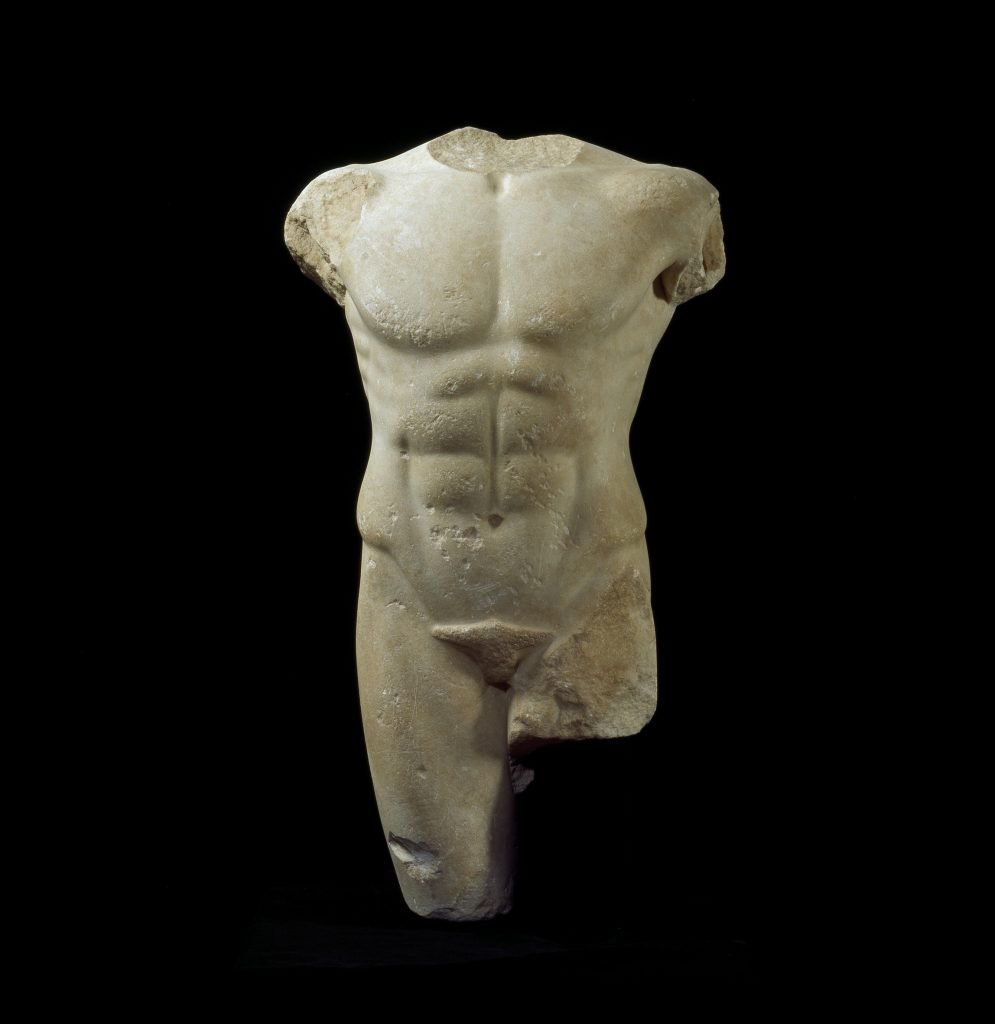
Miletus Torso (c) GrandPalaisRmn_Daniel Lebée et Carine Deambrosis.
Leading up to a stairwell as one heads to the Department of Greek, Etruscan, and Roman antiquities, is the larger-than-life marble sculpture known as the ‘Miletus Torso,” which originates from the Greek Cycladic islands and is believed to depict the god Apollo.
De Font-Réaulx said it hovers at the cusp of two different styles, the more rigid, classic Greek sculptures inspired by Egyptian art, and the more naturalist, Roman sculptures made later in the 5th century. While the marble sculpture is imposing, she noted that it shows signs of that natural-inspired approach in the realistic way the muscles are sculpted, which must have been made from observing a live model.
“It’s one of the most beautiful artworks in the Louvre,” she said.
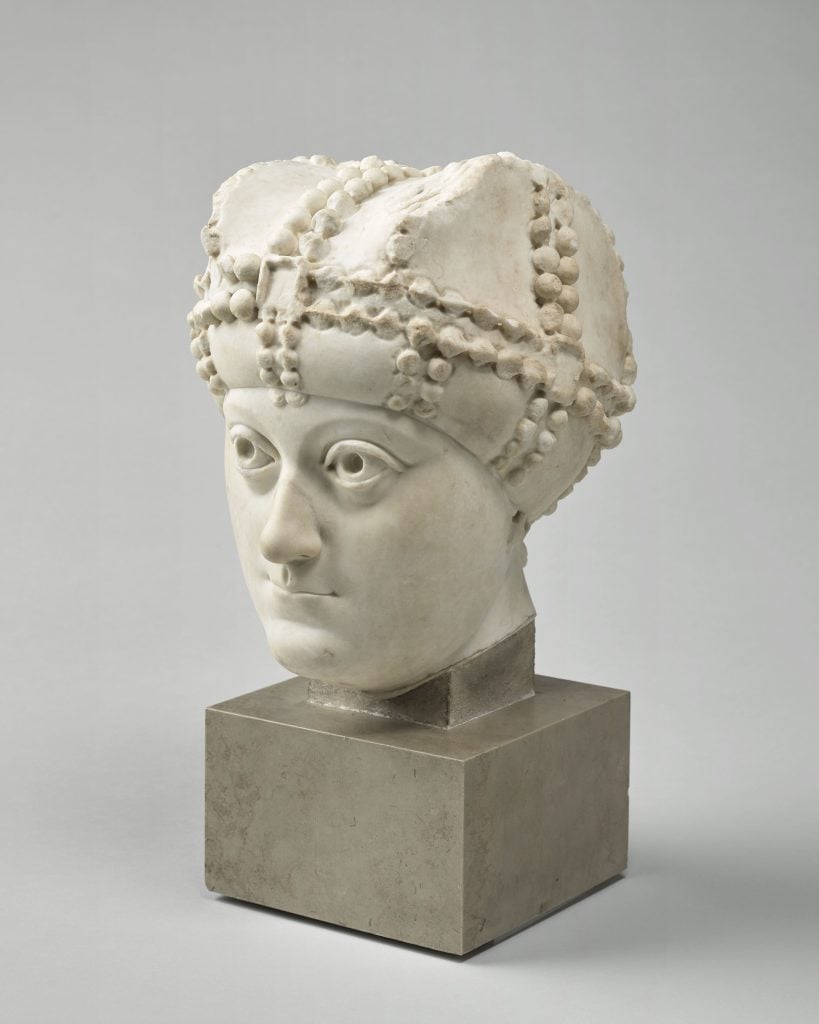
Byzantine empress Ariadne © RMN Grand Palais (Musée du Louvre) Tony Querrec
Reprinted digital images do not do justice to the lifelike gaze of the marble bust identified as the Byzantine empress Ariadne, who reigned from 474 to 515 A.D. “She was a woman of power, and her father [Theodoric the Great] decided she would not only become emperor, but [that] her children would also inherit the throne,” said de Font-Réaulx.
The bus is set to become a part of the museum’s planned department of Byzantine and Eastern Christian Art, which aims to show how portraits and early notions of representation like Ariadne’s had wide-reaching influence on art in other parts of the world, including North Africa.
The donated Ariadne bust was also not an object the museum would have acquired on its own because it didn’t reflect “the taste of the times,” said the curator. Its previous owner, Isaac de Camondo, offered the piece to the museum in 1911. “Without these collectors and their often-bold choices, we wouldn’t have these works,” she added.
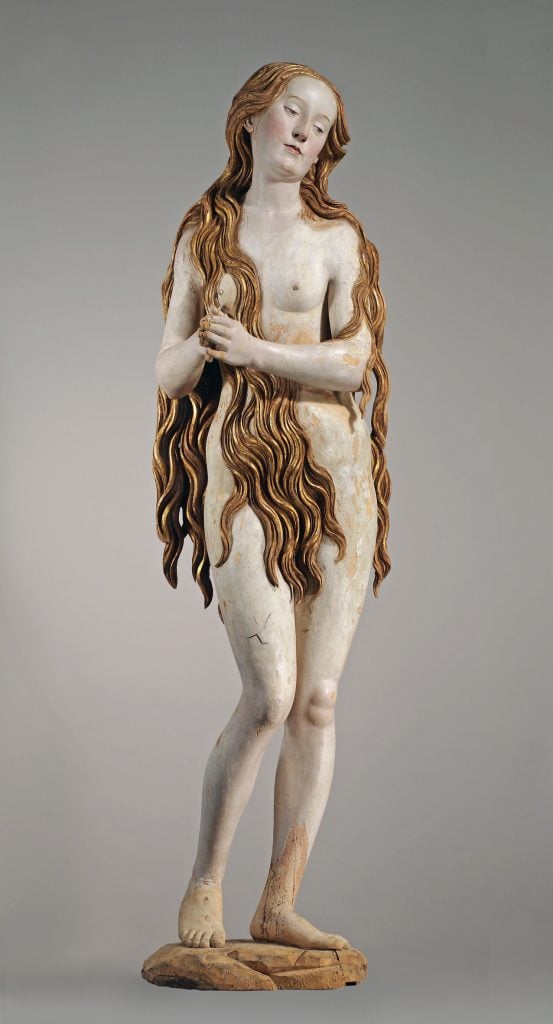
Gregor Erhart’s Sainte Marie-Madeleine © musée du Louvre dist. RMN Pierre Philibert
For another representation of womanhood, de Font-Réaulx led me to a rare wooden German sculpture of Saint Mary Magdalene that dates to between 1515 and 1520, by Gregor Erhart. With its Gothic elements, the Renaissance sculpture shows an almost life-sized woman whose hair modestly covers her naked figure. It includes naturalist aspects such as slightly angled hips from standing with most of her weight on one foot, and sensual, long hair.
“Depicting the Saint Magdalene was actually used as an opportunity to represent feminine beauty, and the human, nude form,” said the curator. The piece was made for a church, and designed to hang, suspended from the ceiling. “This sculpture actually used to fly above the parishioners,” said De Font-Réaulx with a smile.
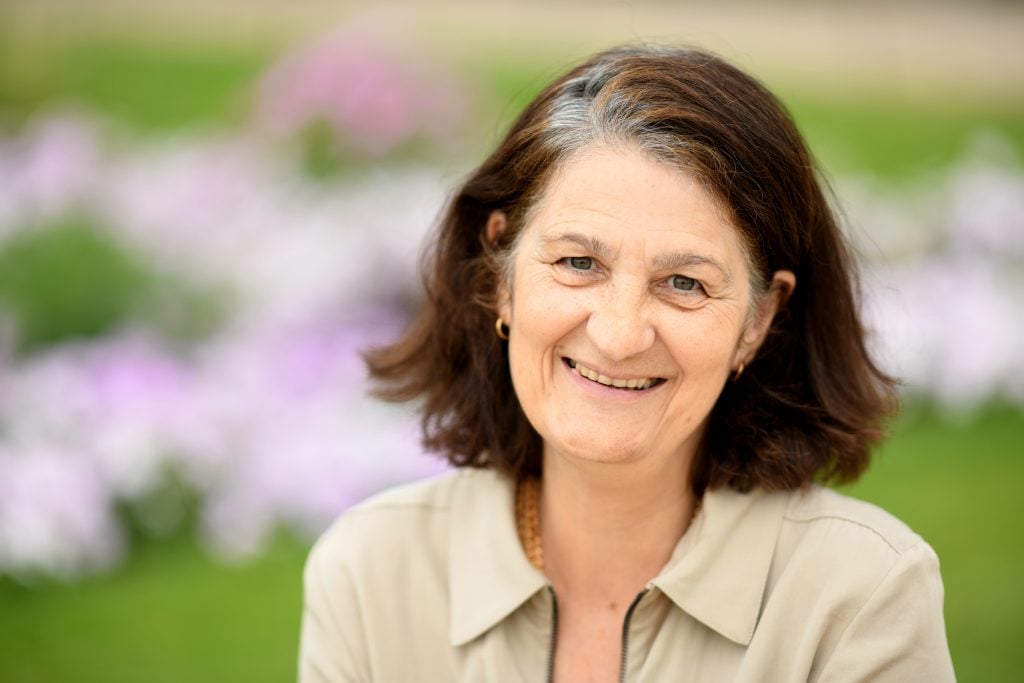
Dominique de Font- Réaulx © Laurence de Terline